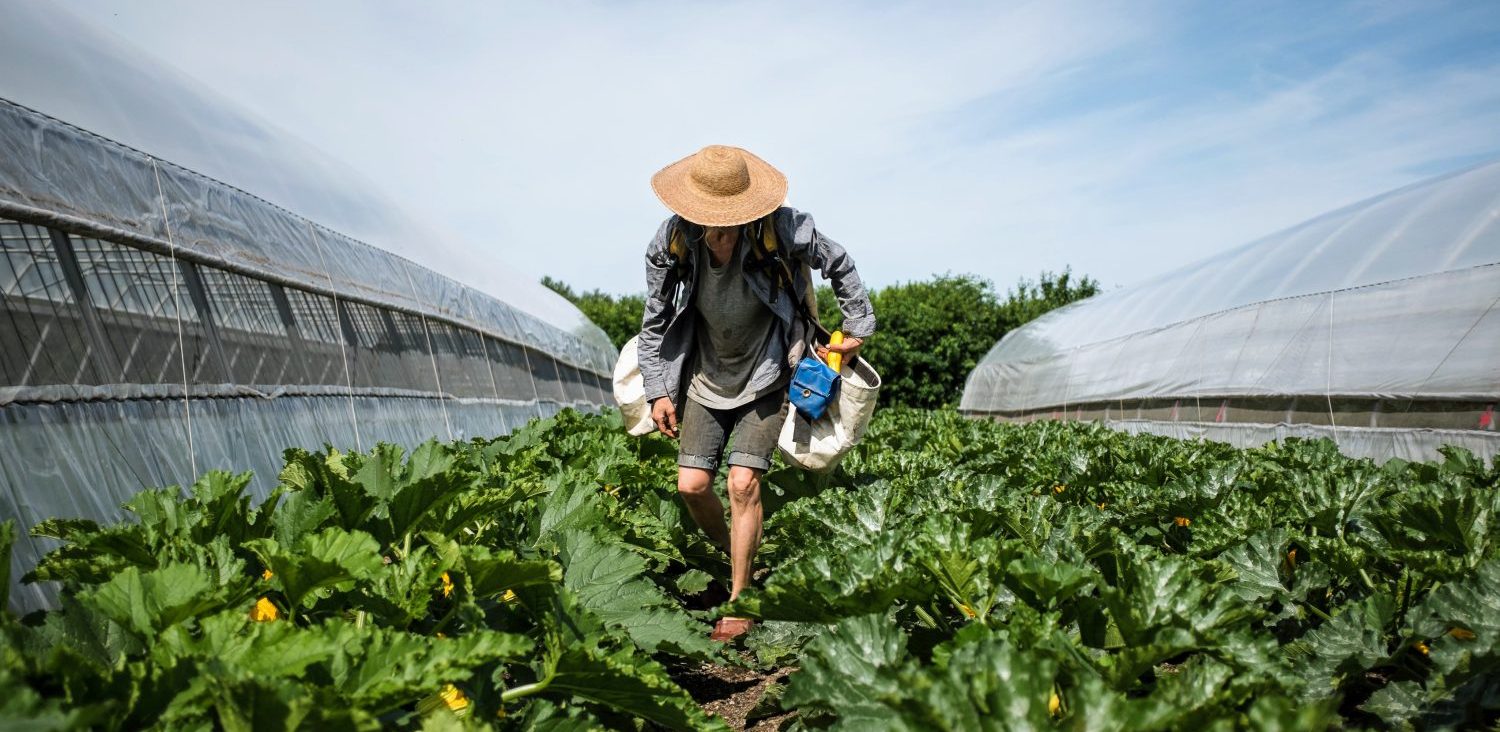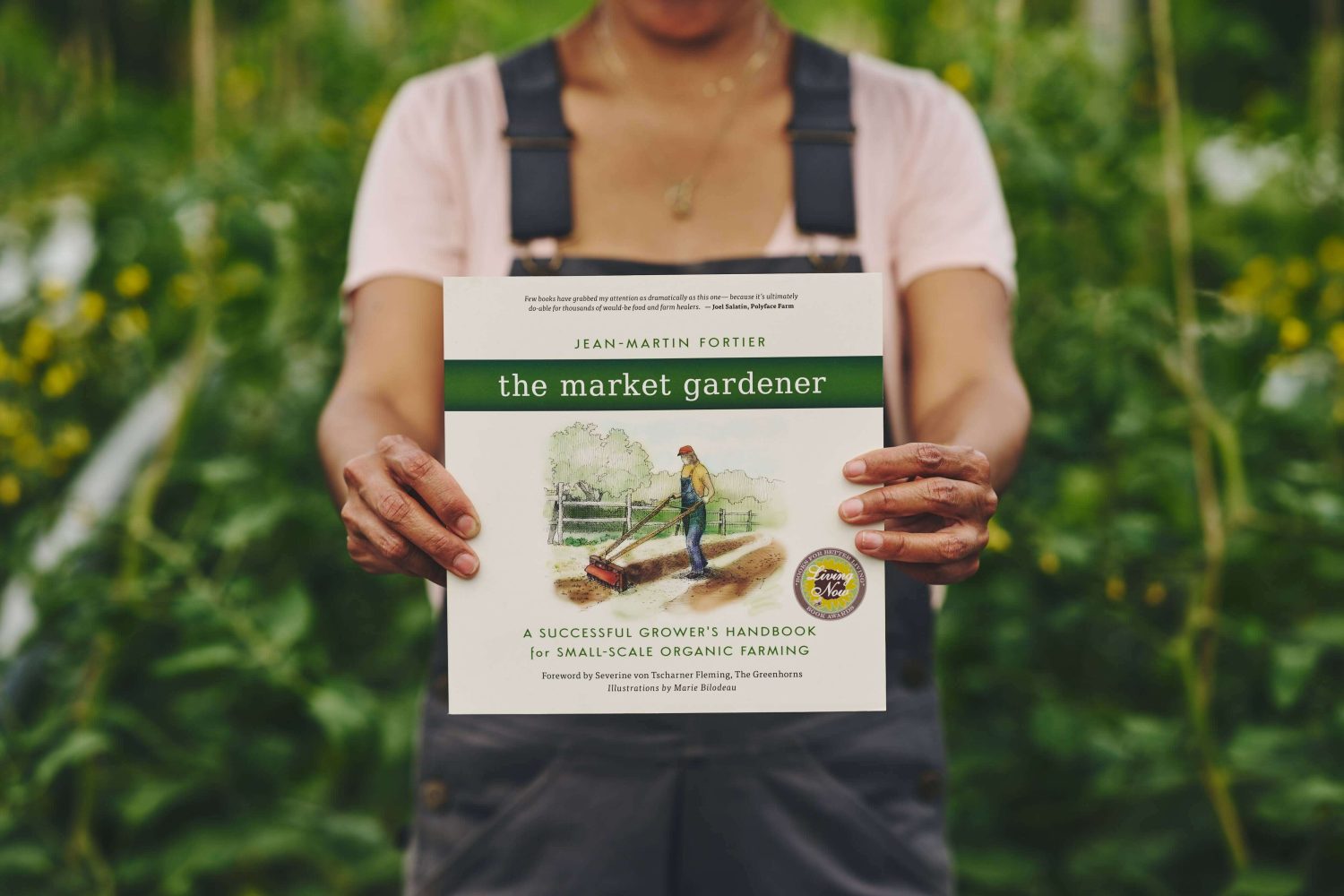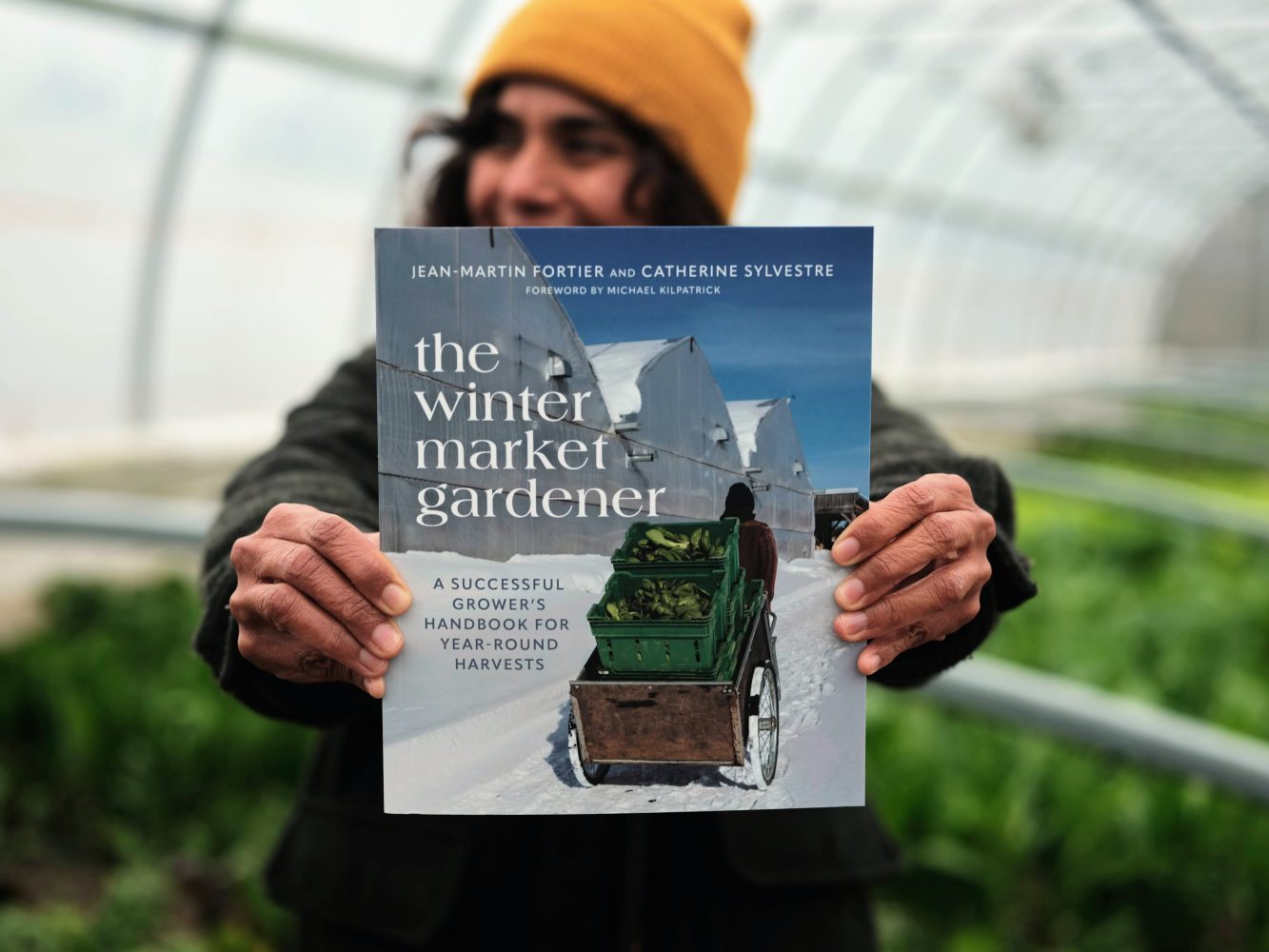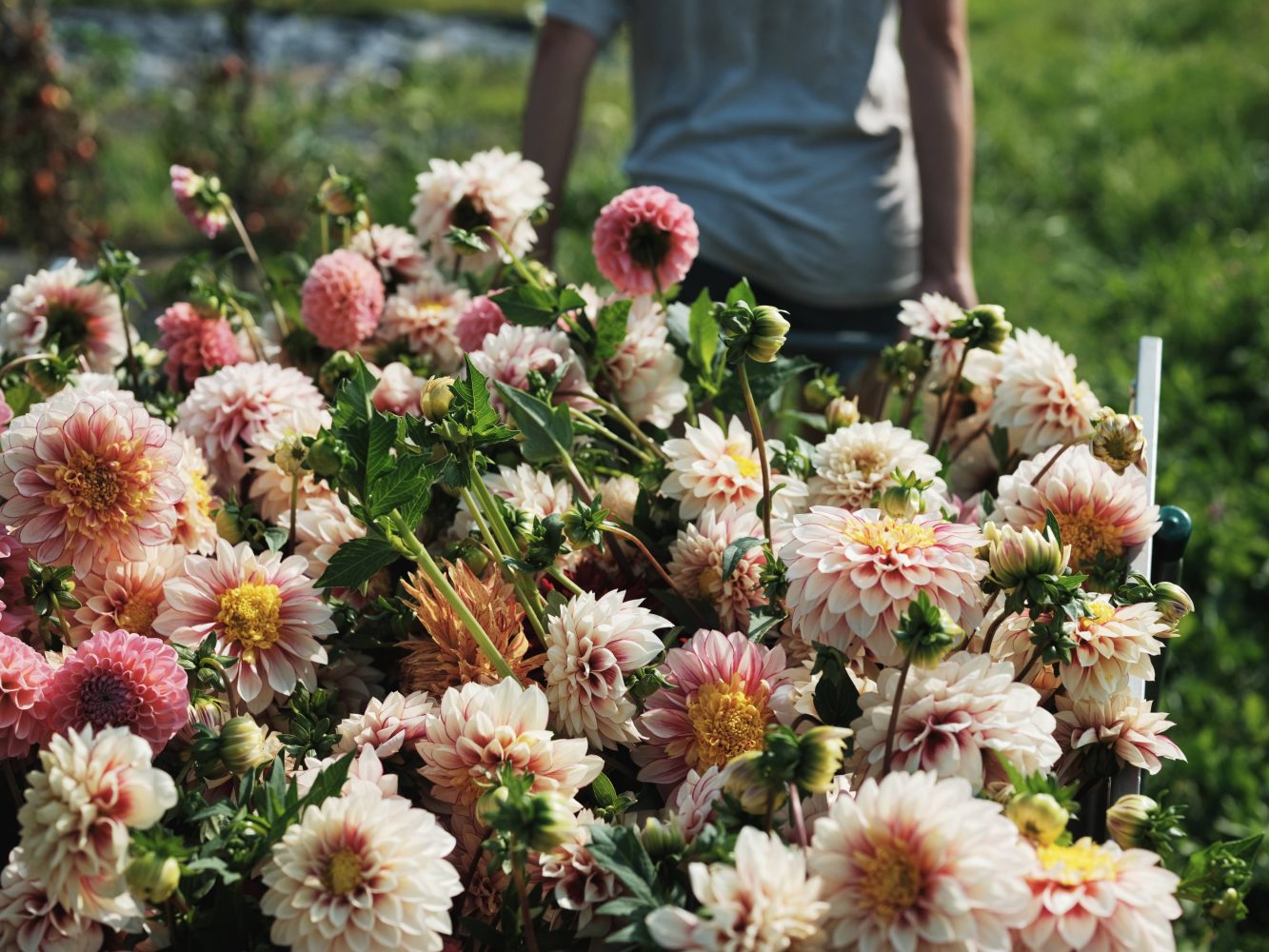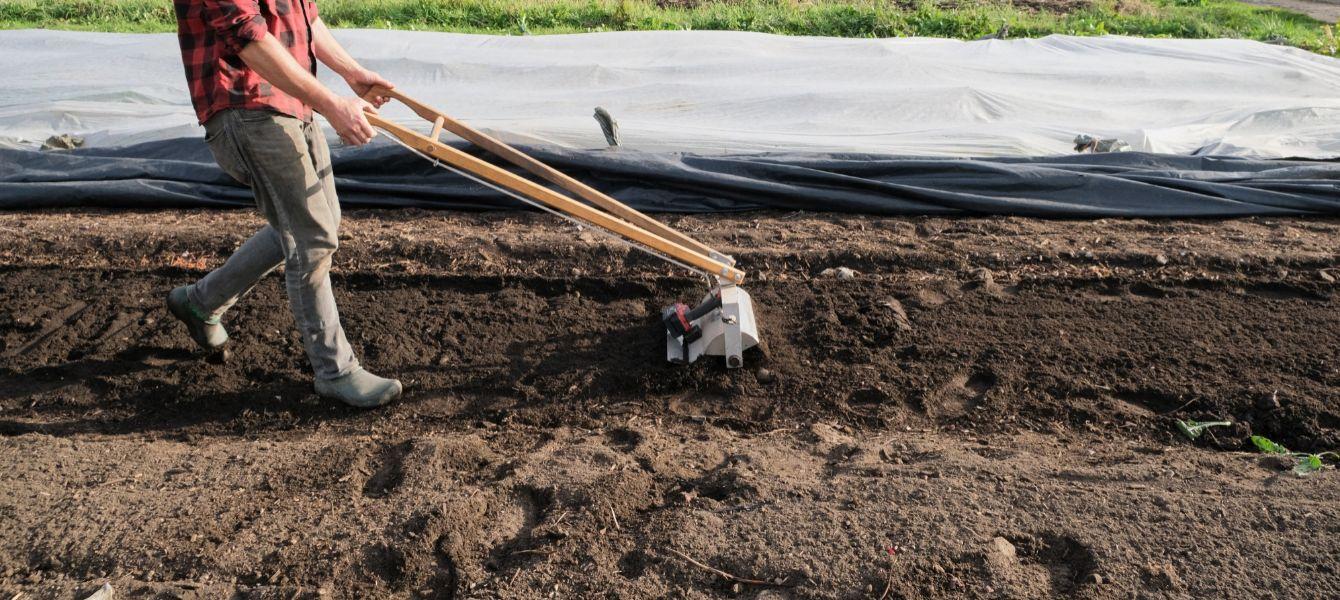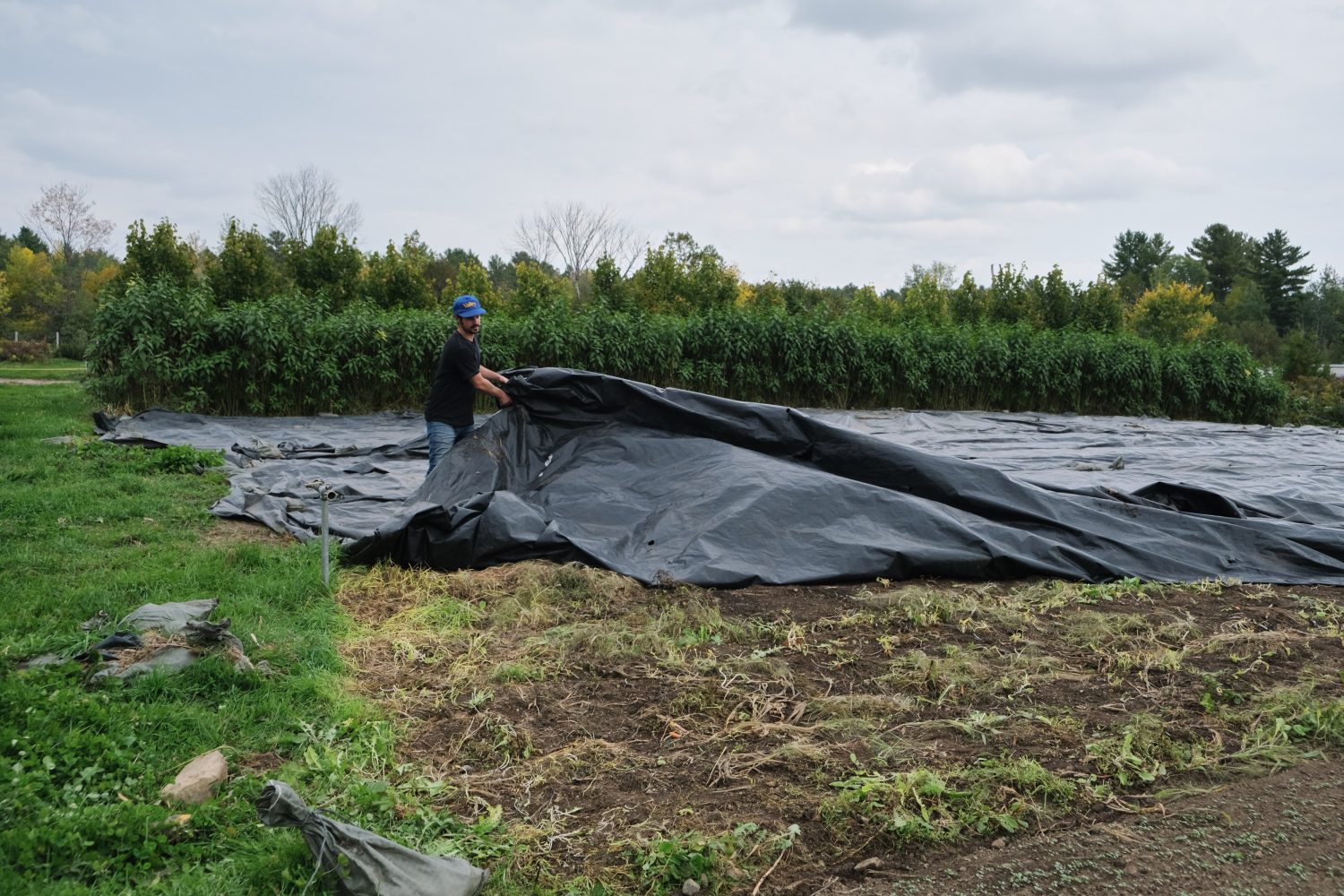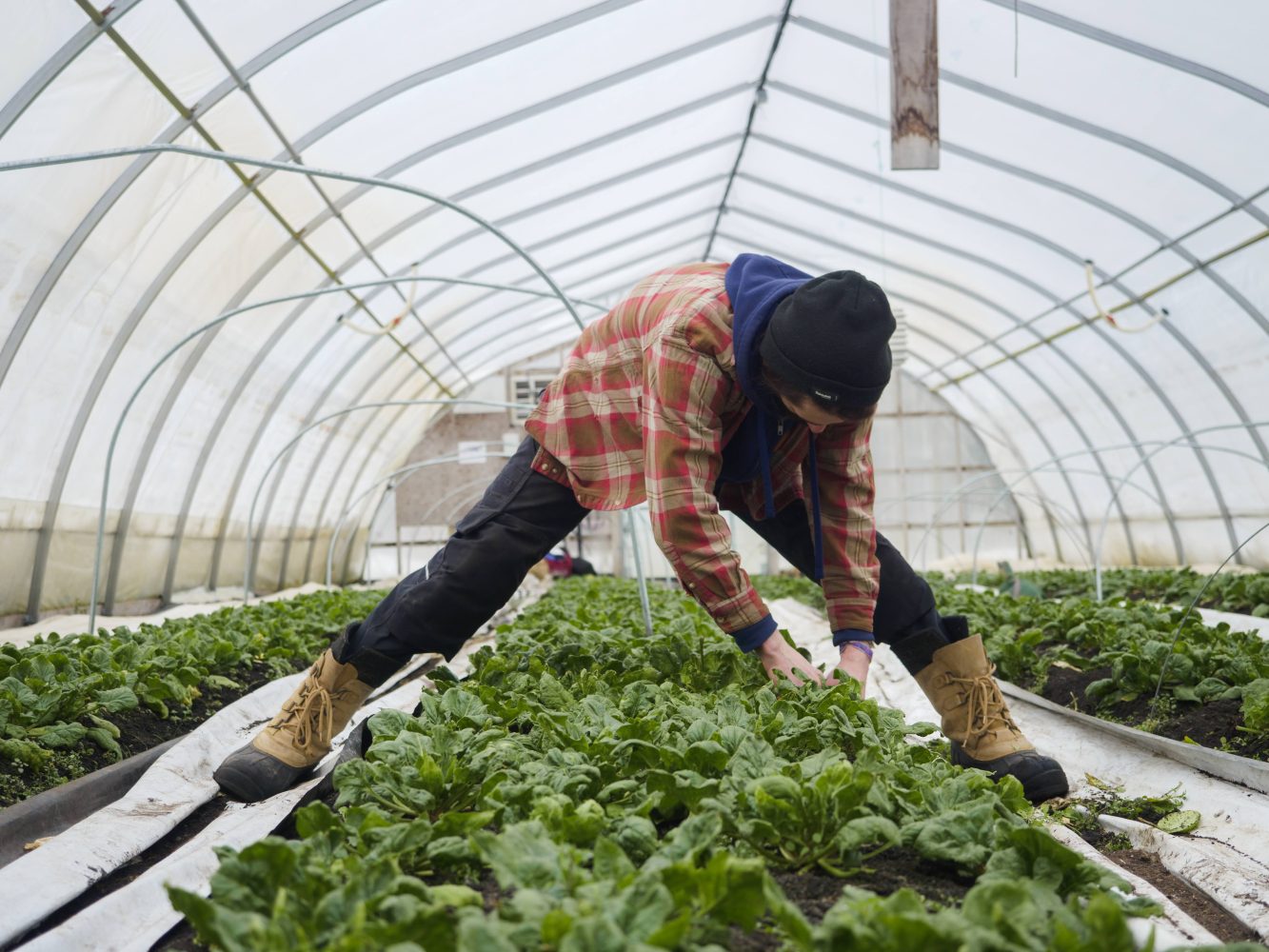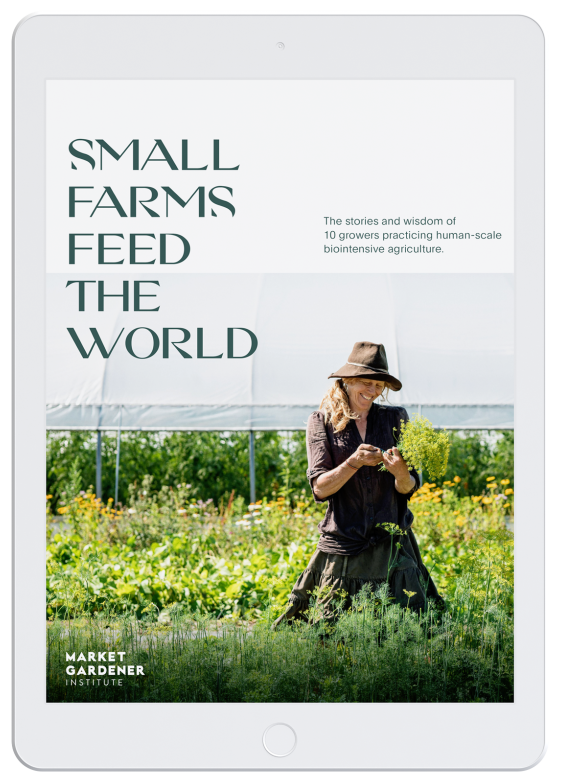Is it your dream to start a small organic farm with a diversified production that respects the environment and people? You should know that this dream of starting an ecological market gardening farm is within everyone’s reach. In this article, let’s review the main principles of biointensive farming as taught by Jean-Martin Fortier. These principles are now applied by thousands of farmers around the world in their projects.
Who’s behind The Market Gardener?

Jean-Martin Fortier founded Les jardins de la grelinette, an organic micro farm, with his partner Maude-Hélène Desroches in 2004. On less than 2.5 acres (under 1 hectare), the farm boasts a pond, hedgerows, trees and, numerous market vegetables cultivated “biointensively”. The farm feeds more than 200 families and generates annual sales of over $150,000. More recently, Jean-Martin used his expertise to start the Ferme de Quatre-Temps, a farming project in Hemmingford, Québec. This larger-scale farm seeks to train aspiring growers in biointensive methods to support them in starting their own farms.
Without breaking the bank on costly equipment, Jean-Martin has been able to create jobs and offer a quality of life for workers on his farms, while taking as many as three months of vacation per year during the winter season. He’s shown that it’s possible to undertake a major agricultural project while minimizing debt and production costs. His simple and low-cost method is explained in his book The Market Gardener, which to date has sold more than 150,000 copies worldwide. Through his farming and book projects alike, the objective of this self-professed “neo-peasant” is to inspire as many gardeners as possible to follow the example of Les jardins de la grelinette. Because it’s time to reinvent the farming profession to make a better living!
Biointensive Farming to Increase Productivity
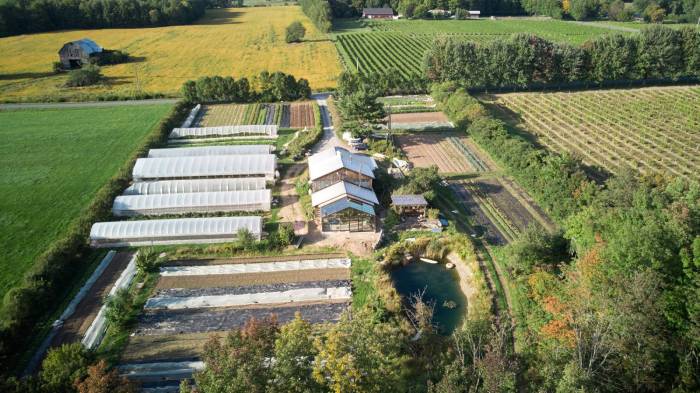
The biointensive farming method outlined by Jean-Martin Fortier in The Market Gardener and put into practice at Les jardins de la grelinette has shown that an area of one hectare (2.47 acres) is large enough to achieve high yields. It relies, notably, on the use of tight spacing between plants thanks to a system of permanent raised beds and succession planting, coupled with the use of appropriate hand tools. This approach allows one to earn an attractive income on a small piece of farmland, cultivate and work on a human scale, and improve soil quality for sustainable, long-term production.
Biointensive Method Best Practices:
In recent years, Jean-Martin Fortier has developed a set of “best practices” based on his work. Listed below are three of his many tips for successful ecological market gardening:
1 – Divide the cultivation area evenly into blocks and beds
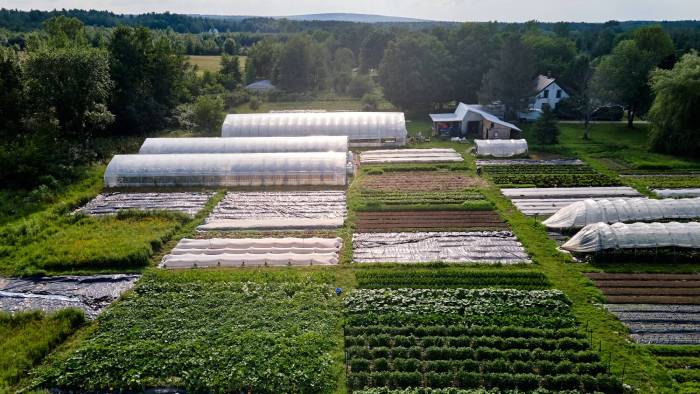
Divide your land into several blocks. These should all be about the same distance, if possible, from the spaces used for packaging vegetables and for equipment storage. Each block should then be divided into permanent raised beds. Standardizing your practices – including the division and size of your garden blocks and beds – makes your work easier in the long term, so it is important that all of your beds be the same size. In general, raised beds should be 30 meters (roughly 100 feet) long and 75 centimeters (roughly 30 inches) wide but can be shorter depending on your needs.
This system allows for better soil drainage and early warming in spring. In addition, this method produces better harvests by avoiding soil compaction and promoting the presence of soil microorganisms.
2 – Weed and prepare the soil using hand tools
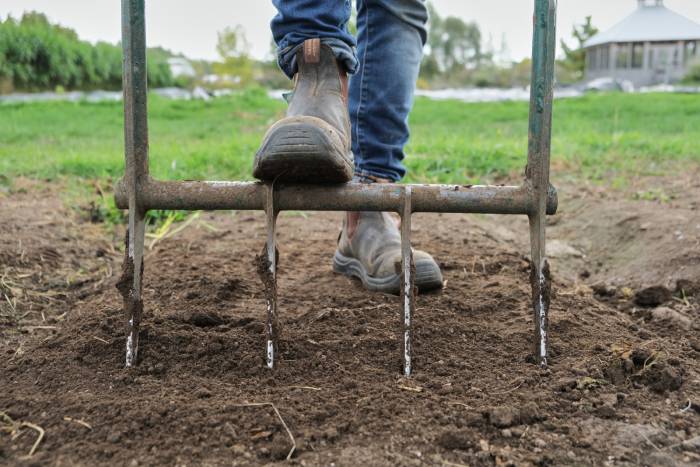
One of the guiding principles of Jean-Martin’s biointensive farming approach is the use of hand tools. Using a broadfork to loosen the soil, rather than turning it over, helps to preserve soil structure and organic matter by opening up the soil without pulverizing it. If any further soil work is necessary, this can be carried out with a rototiller or a power harrow on a BCS tractor, which is less expensive than using large machinery. Weeding is done with various hand tools such as classic garden hoes and wheeled hoes. It should be noted that this time-consuming hard work can be greatly facilitated by the deliberate layout of beds and pathways, which should allow the farmer to move around easily. Other methods to reduce the workload, such as soil-covering or silage tarps, the stale bed seeding technique (also called false seed planting), and mulching can also be used.
3 – Establish a crop rotation and garden plan
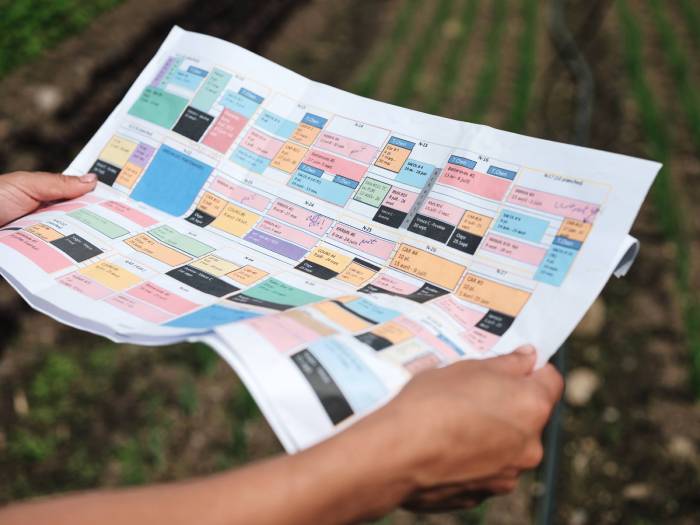
The planting location of vegetables should be changed annually and organized in a multi-year crop rotation. This practice limits the spread of pests and diseases while improving soil structure. To simplify the combination of vegetables in the garden plan, it is wise to group them by botanical family and/or by their requirements. For example, group Brassicaceae/Cruciferae (broccoli, kale, etc.) together as they will have the same fertilization and irrigation needs. These are just a few of the techniques you need to know in order to practice biointensive farming. As is the case with any systemic approach, there are several layers of knowledge to dig into, from organic fertilization with the addition of compost, manure, and green manure; to the careful planning of a farm’s production (budget, plans, calendar…).
Become Full-time Market Gardeners
It probably hasn’t escaped you that current industrial agricultural practices are a dead-end – completely unsustainable. Convinced that the future is in small-scale organic farming, Jean-Martin Fortier has developed a method that is already improving the lives of many growers. His mission: to give you the keys to understanding how to work efficiently and to generate profits while respecting nature. Because there is an urgent need to re-imagine our approach to growing food and to prove that it is indeed possible to achieve community resilience by adopting small-scale organic agriculture.
Are you at the beginning of your process and looking to learn more about Jean-Martin’s principles of bio-intensive farming? We invite you to take a look at our Introduction to Market Gardening course. This course provides a comprehensive overview of everything you need to know when considering becoming an organic biointensive farmer.
If you are ready to start your own farming project, the Market Gardener Masterclass is a comprehensive online program that teaches all the steps to establish a successful organic mixed vegetable production on a small-scale land. Based on 20 years of farming experience, Jean-Martin has designed this program to allow you to obtain consistent results that will support the success of your farm.
